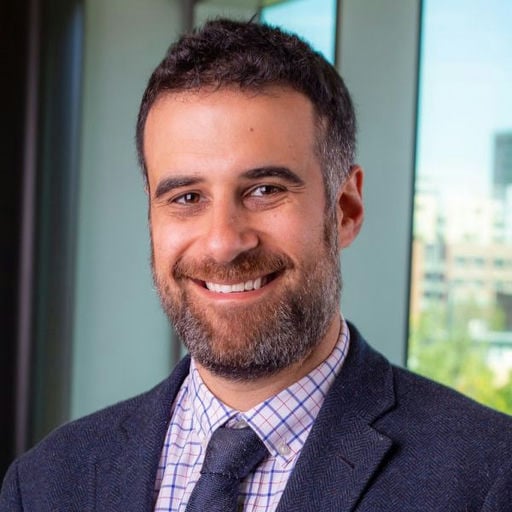Submitted electronically
The Honorable Bill Cassidy, M.D.
Ranking Member
Committee on Health, Education, Labor & Pensions
United States Senate
Washington, DC 20510
Dear Ranking Member Cassidy,
On behalf of Milken Institute FasterCures, we are pleased to respond to your Request for Information on ways to improve and protect access to gene therapies for Americans.
As a part of the Milken Institute, a nonprofit, nonpartisan think tank organization, FasterCures is driven by a singular goal: to save lives by speeding scientific advancements to all patients. With an independent voice, FasterCures is working to build a system that is effective, efficient, and driven by a clear vision: working with our partners to build a patient-centric system where science is accelerated, unnecessary barriers are overcome, and lifesaving and life-enhancing treatments get to those who need them as rapidly and as safely as possible.
With this in mind, we focus our remarks on the appropriate role of the federal government in ensuring access to these therapies (Question #39).
Time Is of the Essence
The federal government has an essential role to play in facilitating and promoting gene therapy access. Gene therapy is a nascent field for which understanding, expertise, and capabilities are still developing. As such, developing and manufacturing gene therapies require significant upfront investments. Few entities beyond the large, established biopharmaceutical companies have the financial capacity to absorb these costs through the full development and commercialization timeline. However, in the past few years, we have witnessed these same companies deprioritize investments in this area. This is troubling, not only because potentially beneficial science may no longer be pursued, but also because of the dampening effect this can have on the gene therapy innovation ecosystem. Research institutions and smaller biotech companies at the forefront of gene therapy innovation frequently look to partnerships with larger companies to fund the continuation of research that can ultimately lead to a new approved therapy. New incentives and ways of streamlining gene therapy development are needed to sustain and grow the innovation ecosystem. Federal government initiatives like the Accelerating Medicines Partnership® (AMP®) Bespoke Gene Therapy Consortium are commendable and we believe will generate important learnings that will make gene therapy development more efficient. However, the positive effects of programs like these may not be felt for many years. In the meantime, patients are waiting.
Access to Treatments for Both Ultra-Rare and More Prevalent Diseases Should Be Considered
We agree there are unique challenges to gene therapy development and access considerations for ultra rare diseases. Incentives to promote therapeutic development for ultra-rare diseases require and merit specific attention by Congress. Through the course of this information collection, however, the Committee will receive information on potential solutions to gene therapy access for not only ultra-rare diseases but also more common diseases. We urge the Committee to expand the scope of its activities to include solutions for both ultra-rare and more prevalent diseases. This is urgent given the growing pipeline of gene therapies on the horizon. By 2025, more than 20 gene therapy approvals are expected, according to CVS Health’s Gene Therapy Report; top categories include metabolic disorders, hematology/oncology, and ophthalmology. As these therapies enter the market, they will quickly overwhelm our health system. This RFI creates the opportunity to prepare for this influx of gene therapy products and to explore solutions that can be applied to gene therapies for a range of diseases, from the ultra-rare to the more common. As more and more gene therapies come to market, current inequities in gene therapy access are only likely to worsen, as disadvantaged and underserved communities continue to be left behind. We urge Congress to use this opportunity to examine the full range of potential solutions that can support access to gene therapies for all patients who can benefit from them.
States Should Have More Support to Move Quickly
The year 2023 was marked by the milestone approvals of gene therapies for the treatment of sickle cell disease (SCD). These landmark therapies have finally reached our doorstep, yet questions remain unanswered about how to ensure access to people living with SCD. With an estimated 50% of individuals with SCD covered by Medicaid, states have a critical role to play. But we need not look too far back in history to get an indication of how states may respond to the arrival of gene therapies, particularly as the number of approvals start to grow; in 2013, in response to the emergence of direct-acting antivirals for Hepatitis C, states implemented severe restrictions on access that had a disproportionate impact on the most vulnerable communities. On balance, states have been sounding the alarm on the implications of gene therapies on state budgets. The CMS Innovation Center’s Cell and Gene Therapy Access Model is an important step toward answering their call. However, with the Model’s expected launch in 2025, more than one year will pass before the Model will truly be a viable option for states. In the absence of a near term solution, we urge the Committee to evaluate the resources and flexibility that can be provided to states to support the timely development of clinically appropriate coverage policies. One area worthy of further investigation is the implementation of value-based payment (VBP) arrangements. More than 20 states have received CMS approval to enter into value-based purchasing supplemental rebate agreements with manufacturers, yet most have yet to apply this authority. We must understand any obstacles that may be precluding states from putting in place these types of arrangements and what resources and guidance would facilitate their implementation. Organizations like Tuft Medicine’s NEWDIGS, of which FasterCures has long been a member, have done extensive work on the tools that would enable implementation of innovative financing solutions within state Medicaid programs and thus would serve as a vital resource to the Committee.
Success Cannot Be Achieved Without Addressing Siloed Data Systems
We urge the Committee to consider how improvements in the nation’s data infrastructure could facilitate access to gene therapies. Fundamentally, coverage and payment models cannot succeed and be scalable if the data that undergirds it is fragmented and incomplete. Since 2020, FasterCures has convened stakeholders to explore the challenges and opportunities related to data collection for gene therapies. A common thread throughout this work is the need to coordinate and establish, only where needed, data systems so that they have the ability to address multiple information needs. Current efforts have been described as too siloed and narrowly focused on satisfying FDA’s requirements. Stakeholders see an urgent need for holistic data collection that could answer questions and yield evidence of interest to not only regulators but also patients, providers, and payers. The burden on patients and providers to collect and report data is significant and must be streamlined. An area of low-hanging fruit is improving alignment between FDA and CMS data collection and evidence requirements. There should be clarity on how data and evidence for regulatory approval could be repurposed for CMS coverage decision-making, or a mechanism for data sharing between the two agencies when appropriate. We encourage the Committee to consider ways to strengthen the infrastructure that will support innovative coverage and payment models, starting with opportunities to streamline, integrate, and coordinate data collection efforts that are already in place.
Prioritize the Views of Patients and Communities
Finally, and most critically, we ask the Committee to prioritize the perspectives of locally based patients, caregivers, and other local and community stakeholders in information requests such as this and any subsequent activities. It should be requisite that “what good looks like” be determined and defined by those who will be the most affected by the decisions that are made as a result of the Committee’s work: the patients. Access is too often framed in terms of insurance coverage, but we have learned that patients’ perceptions of access, particularly as it relates to gene therapies, must be broader. In 2021, we worked with patients and other interested stakeholders in delineating many of the questions that arise for patients and caregivers when confronted with an option of gene therapy. This patient journey map revealed logistical, informational, financial, and emotional challenges that can be overlooked, but all of which affect patient experiences with access. We know that much work needs to be done to develop this understanding. A 2022 review by Sick Cells on Medicaid access for sickle cell disease therapies found that patients are the least consulted stakeholder group when decision-makers are establishing coverage policies. Yet they bear the greatest burden, in terms of illness and economics. The range of costs borne by patients and families (and the healthcare system overall) are well described in EveryLife Foundation for Rare Disease’s National Economic Burden of Rare Disease Study, which should serve as a starting point for grasping the total costs to the healthcare system, which is much greater than estimates of direct medical costs would suggest.
Thank you again for the opportunity to offer our input. We are happy to discuss these ideas further or convene conversations with our stakeholder community if that would be helpful to you.
Sincerely,
Esther Krofah
Executive Vice President, MI Health
Milken Institute
Sung Hee Choe
Managing Director, FasterCures
Milken Institute





















